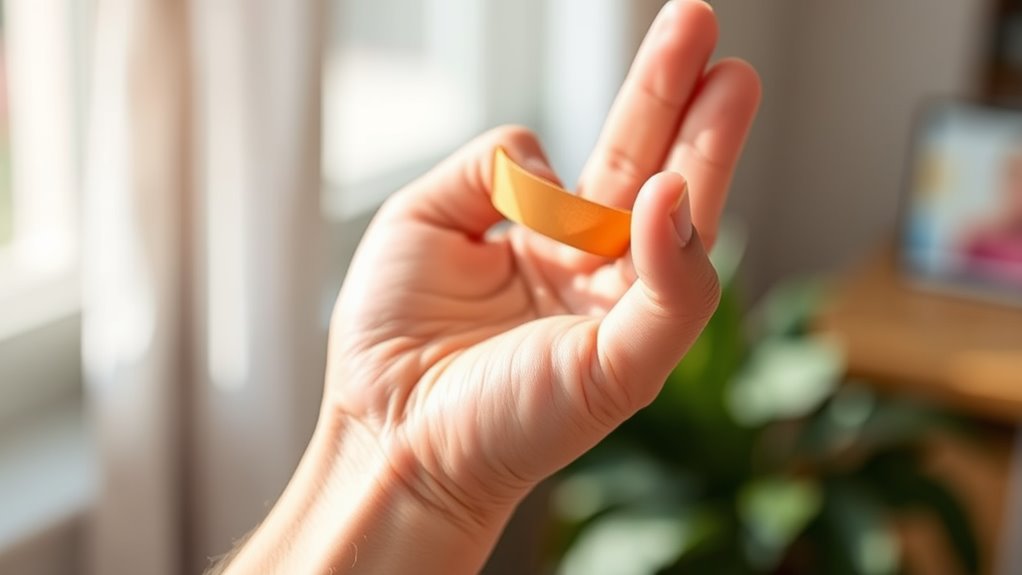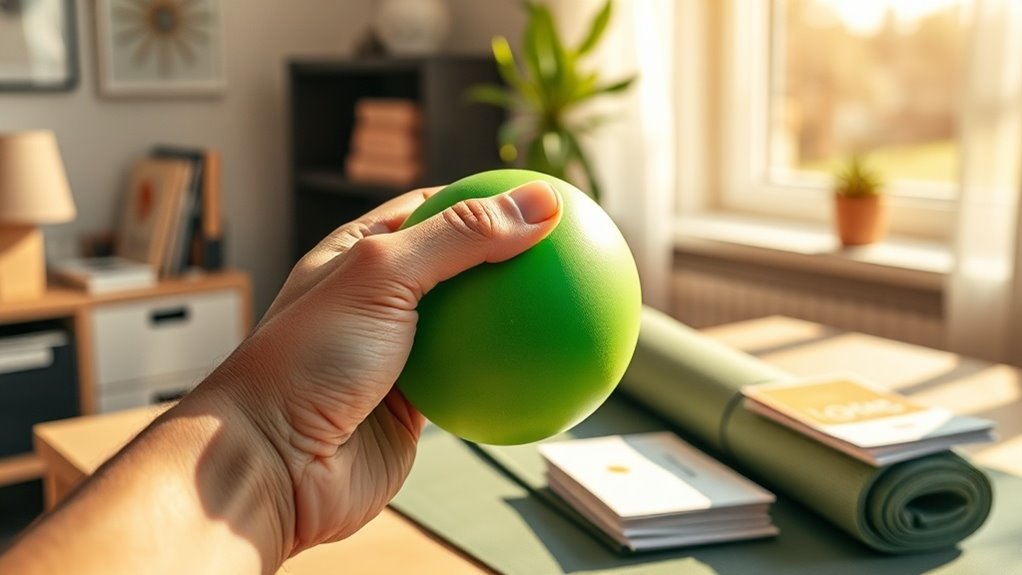Start with a soft stress ball for gentle squeezing exercises that build flexibility without strain.
Add a pack of rubber bands for resistance training, helping strengthen the tendons while you take control of your recovery.
Include a warm compress or heating pad to reduce inflammation and soothe discomfort—it’s all about easing your pain empathically.
These affordable, everyday items make the process accessible, empowering you to improve movement at your own pace.
Required Materials for Home Treatment
You’ll need a few essential items and tools to safely treat your trigger finger at home, as they’re key to easing your discomfort.
Start by gathering things like a simple splint and lubricant to support your efforts.
Using these will help you manage symptoms more effectively and with less hassle.
Additionally, incorporating ice packs can help reduce swelling and numb the pain for better relief.
Essential Items
The essential items for treating trigger finger at home are simple and accessible, helping you manage symptoms effectively.
As someone who’s been there, I understand how frustrating it can be, so let’s focus on what you need to start feeling better.
- A warm compress: Use it several times a day to reduce swelling, ease pain, and improve finger flexibility, giving you quick relief.
- Moisturizing lotion: Apply it gently to lubricate the tendon, minimizing friction and helping prevent those painful catches.
- A clean, soft cloth: Wrap it around your finger for support during rest or light activities, offering comfort without added strain.
With these items, you’re taking compassionate steps toward regaining control and easing your daily struggles.
Tools Needed
Beyond the essential items, you’ll find a few key tools make home treatment for trigger finger even more effective, helping you ease discomfort and regain mobility with minimal hassle.
Start with a finger splint to stabilize the affected digit and reduce inflammation—it’s a game-changer for restful nights.
Add a soft stress ball for gentle squeezing exercises that build flexibility without strain.
Don’t forget a small roller or massage tool to target tight tendons empathetically.
These simple additions empower you to manage symptoms at home, fostering steady improvement and hope in your recovery journey.
Step-by-Step Instructions for the Remedy
Now, follow these straightforward steps to ease your trigger finger symptoms at home, empowering you to take control while we keep things simple and supportive.
We’re here to guide you through this process with empathy and care, using the tools you’ve prepared.
- Apply heat: Place a warm compress on your affected finger for 5-10 minutes to relax the tendons and reduce stiffness—you’ll feel immediate soothing.
- Massage gently: Use your other hand to rub the finger in slow, circular motions for 2-3 minutes, promoting better circulation and easing discomfort.
- Stretch carefully: Extend the finger fully, hold for 10 seconds, then release; repeat 5 times to improve mobility without strain.
For added relief, consider that natural remedies like these can also help address triggers such as repetitive movements from daily activities.
Daily Practices to Improve Movement
You’ve been struggling with trigger finger, so let’s explore simple daily practices that can ease your discomfort and boost your finger mobility.
Begin your day with morning finger stretches to gently loosen up, then add daily grip exercises to strengthen those key muscles.





